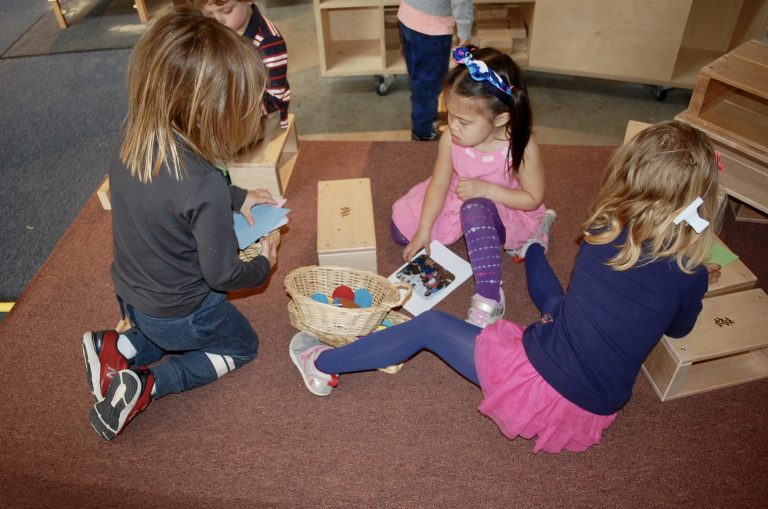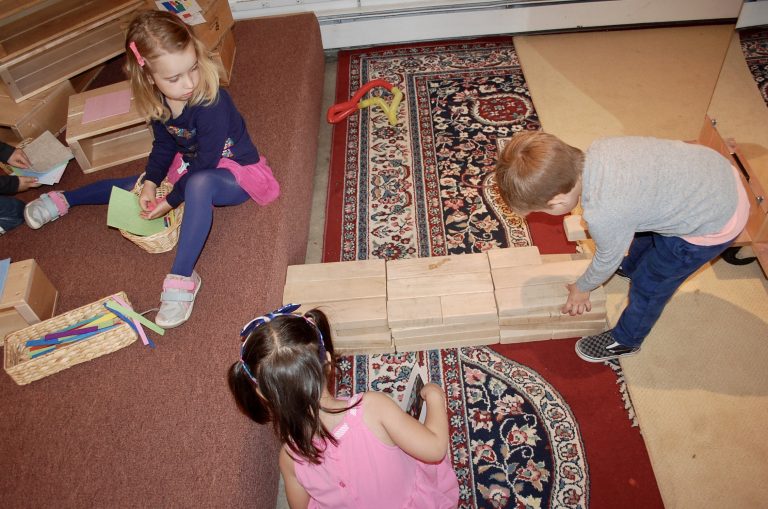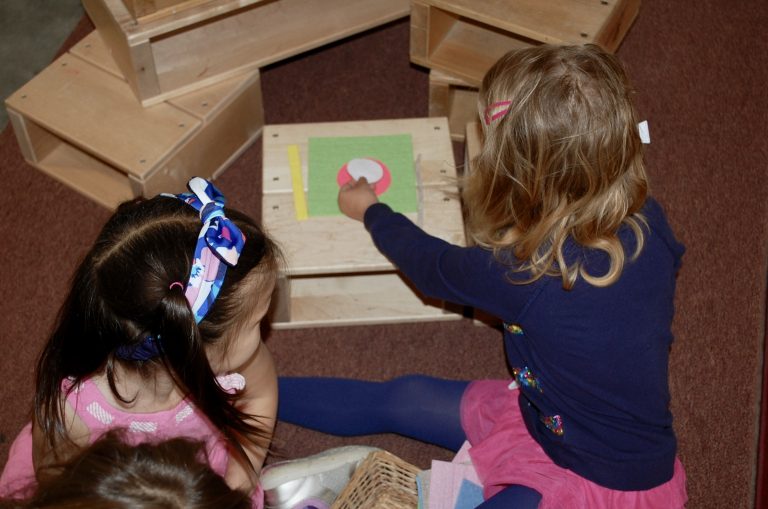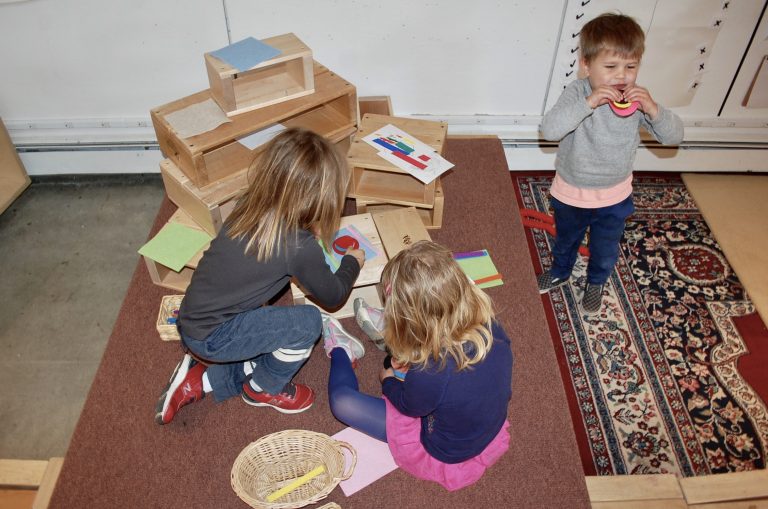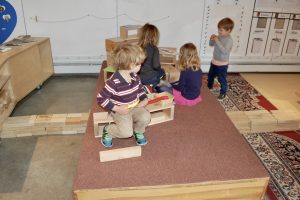During Early Morning Dropoff, Asha and Travers are working on making a “rock show,” which entails delivering a large load of rocks to the bleachers. It also involves playing some pretend guitars (see top photo).
When Ian arrives, he begins putting the rocks back in the wagon. Soon Luca shows up and they work on this together, searching for more rocks to go into the wagon. When they’re done, they both try to move the wagon, but to no avail!
Saige finds these rocks covered by flower petals and declares that the petals are cherry candy and the rocks are wrappers. Sam joins her for this, offering a pine cone he had found. This becomes vanilla candy.
When Asha begins lining up bricks on the bleachers, Britton, from Studio Purple, comes over to help. After they leave, Jane, from Studio Red, transforms the area into a stage to perform on, moving the bricks to become steps up to the stage.
Loose parts appeal to all age groups, and each group’s developmental stage is met and challenged with each new encounter.
Loose parts support invention, divergent thinking, and problem solving through hands-on activity that enhances small and large motor development.
Young brains (and this applies beyond preschool years) respond to movement and sensory input because this is necessary for their development. Children don’t lug heavy loads, spin giddily, do downward dog, or balance carefully walking across a log simply because it is fun. They do these things because their brains require it of them. Likewise, each child individualizes the use of loose parts to best meet her/his development, bringing about a chain reaction: in satisfying their developmental needs, confidence and self esteem are boosted; feeling good about themselves, children become more trusting; trusting children become more social, who, in turn, become more open to others’ ideas.
Community grows.
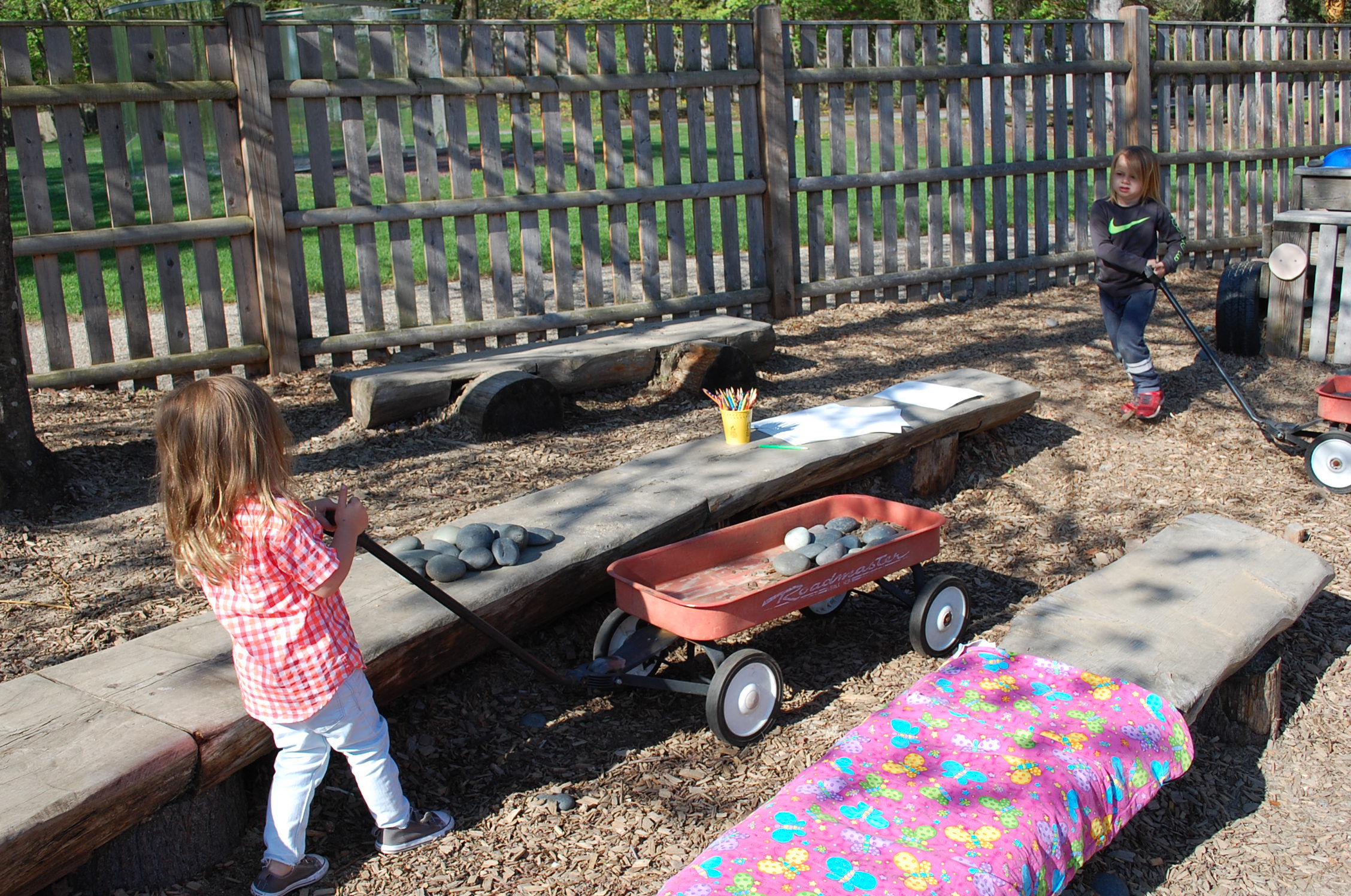
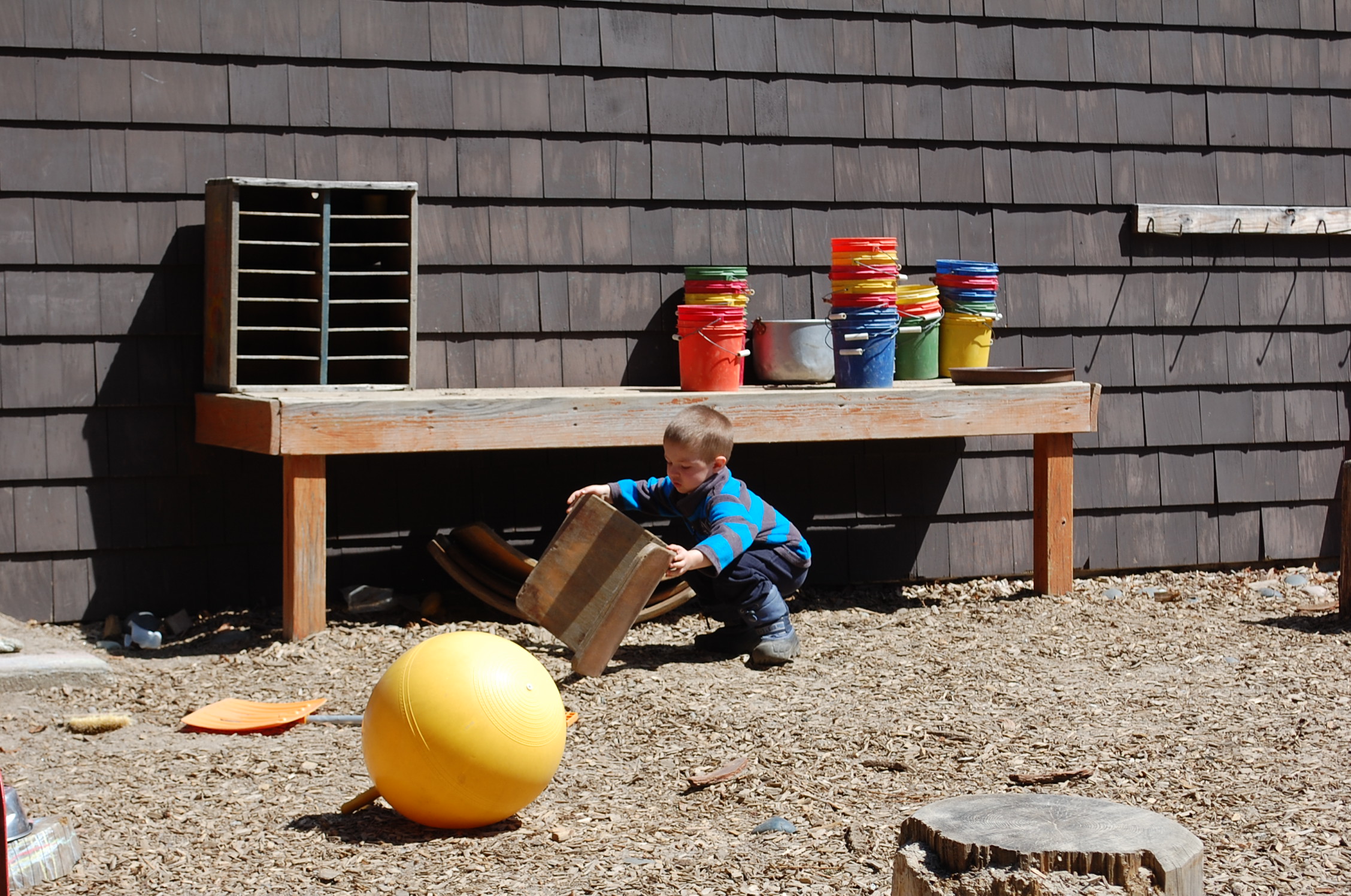
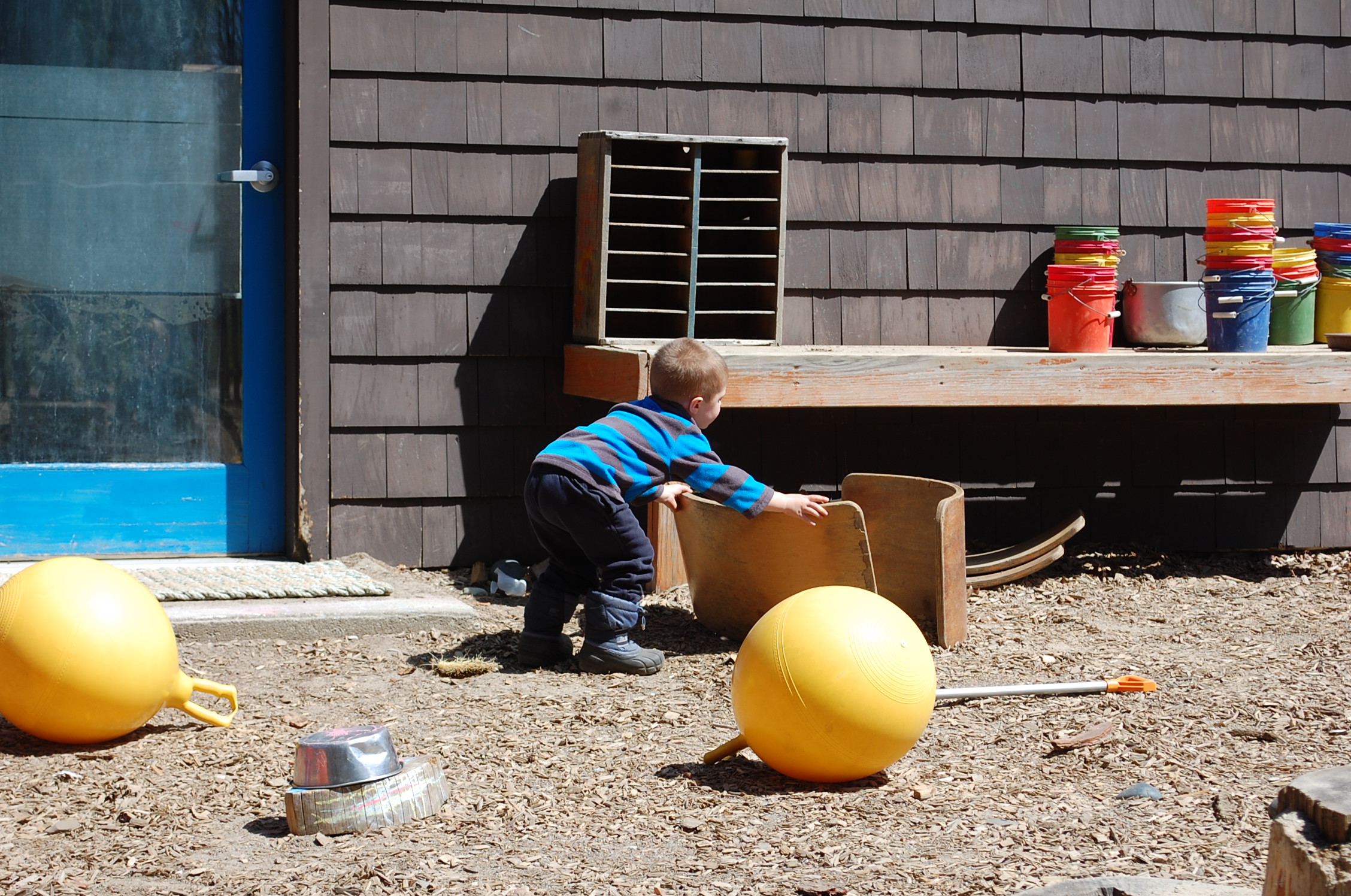
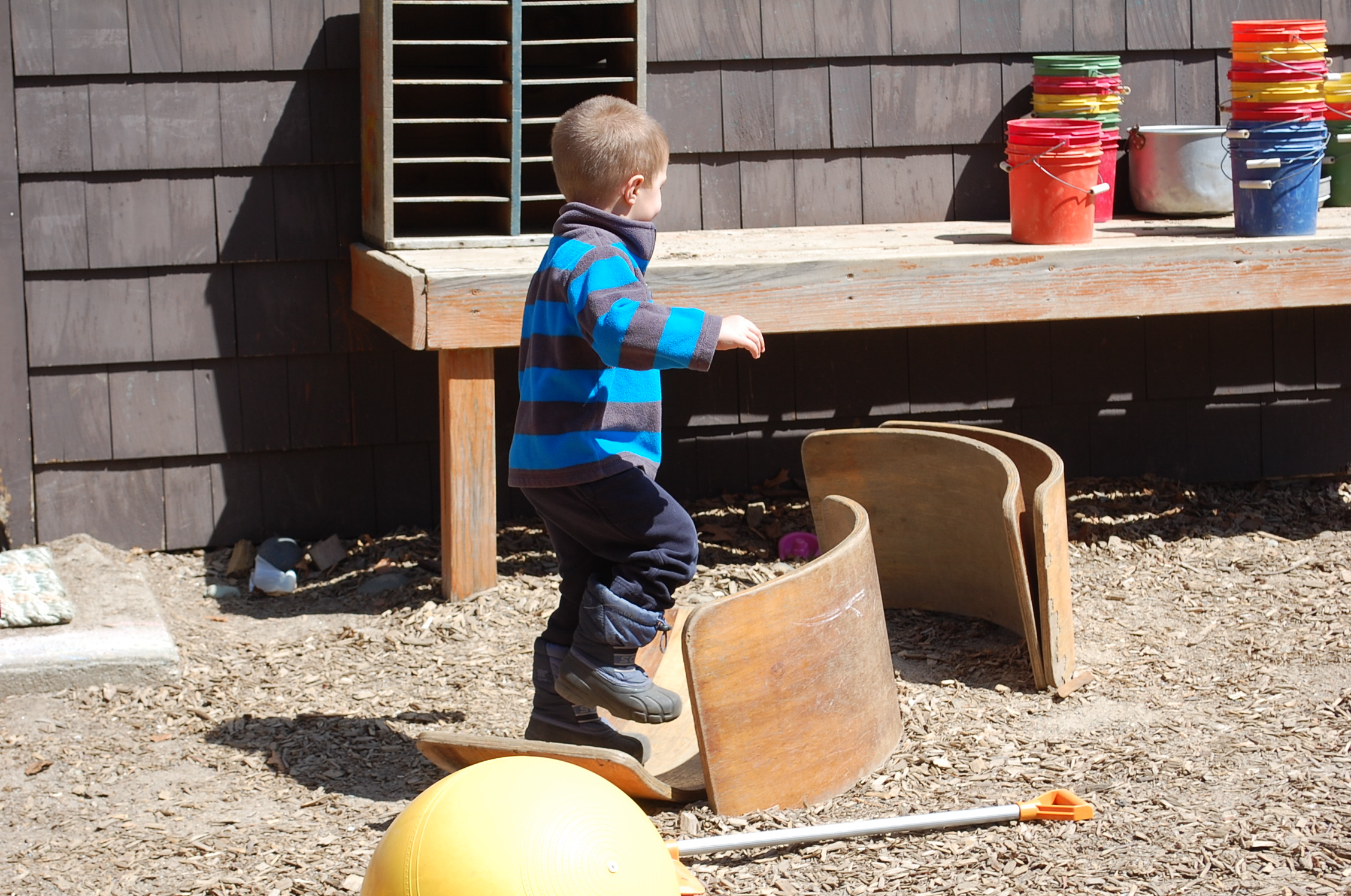
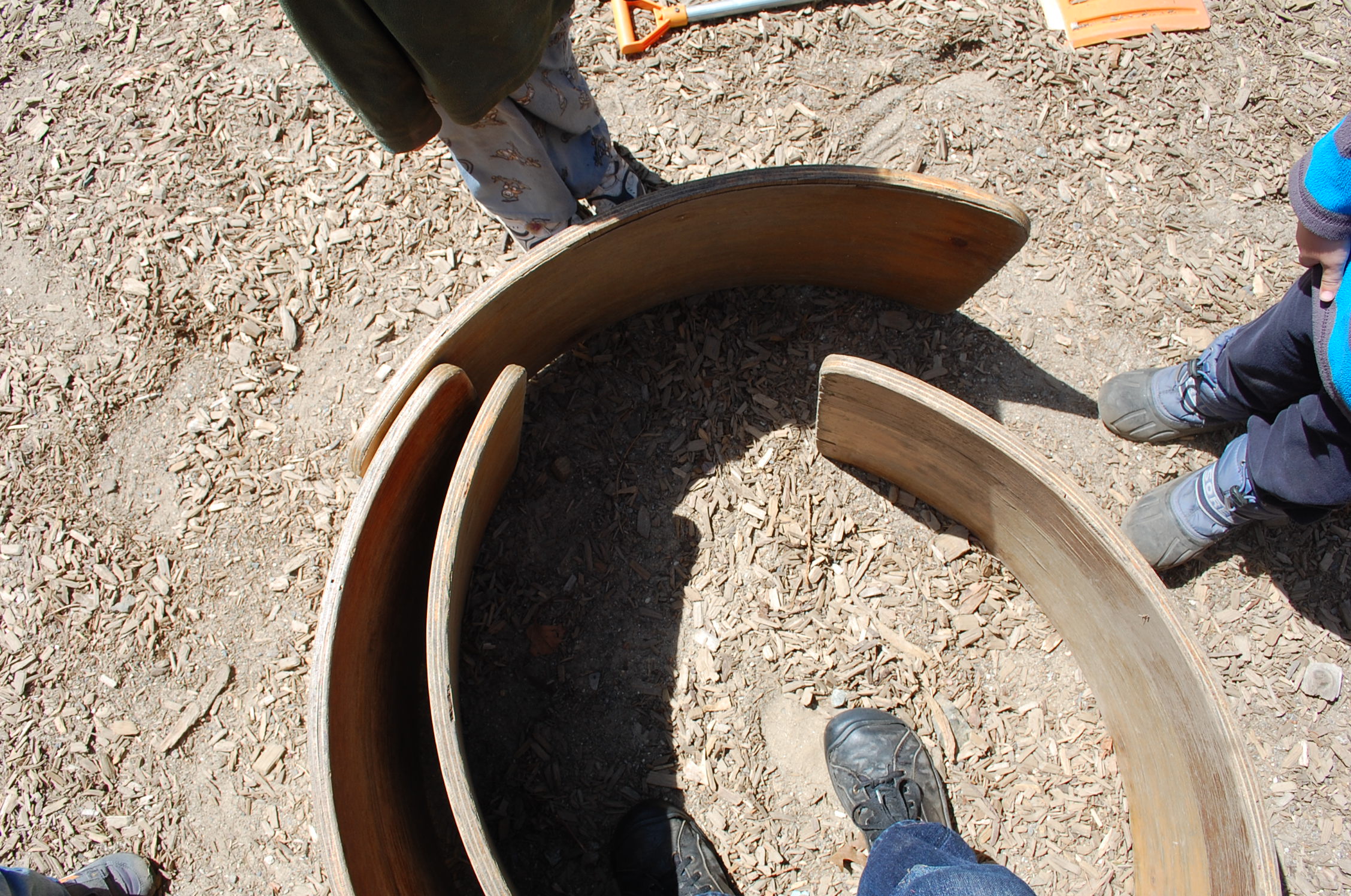
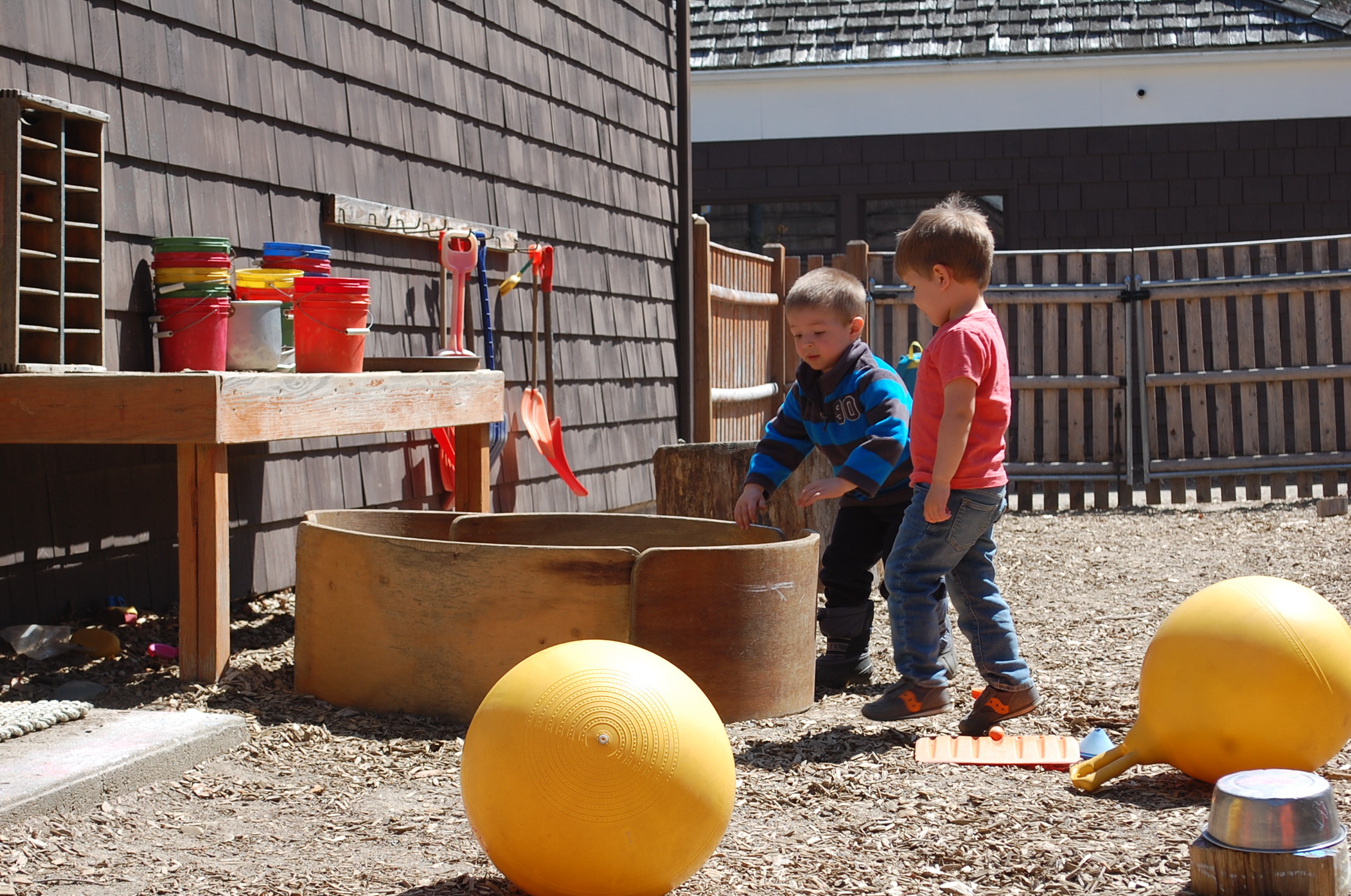
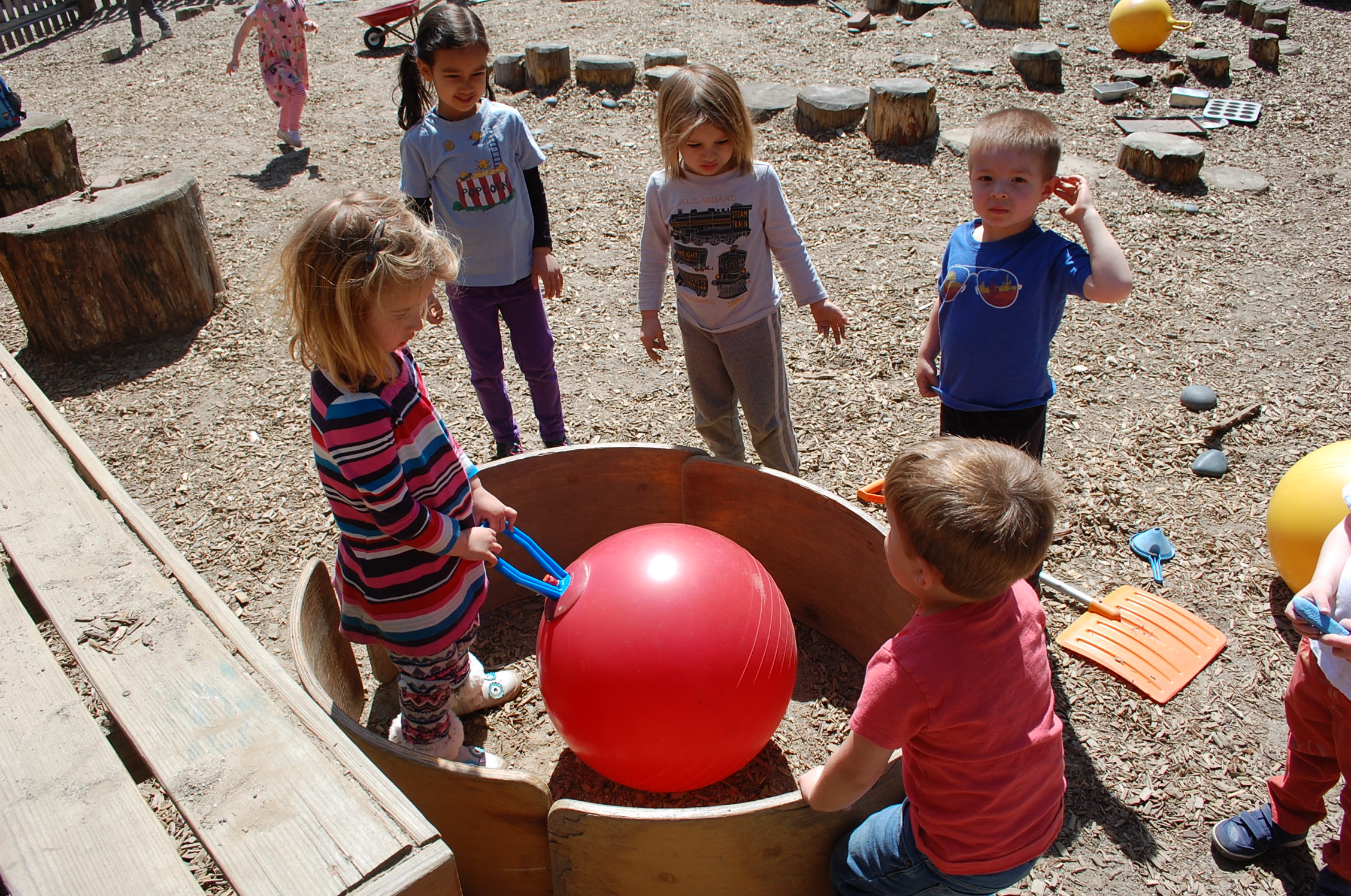
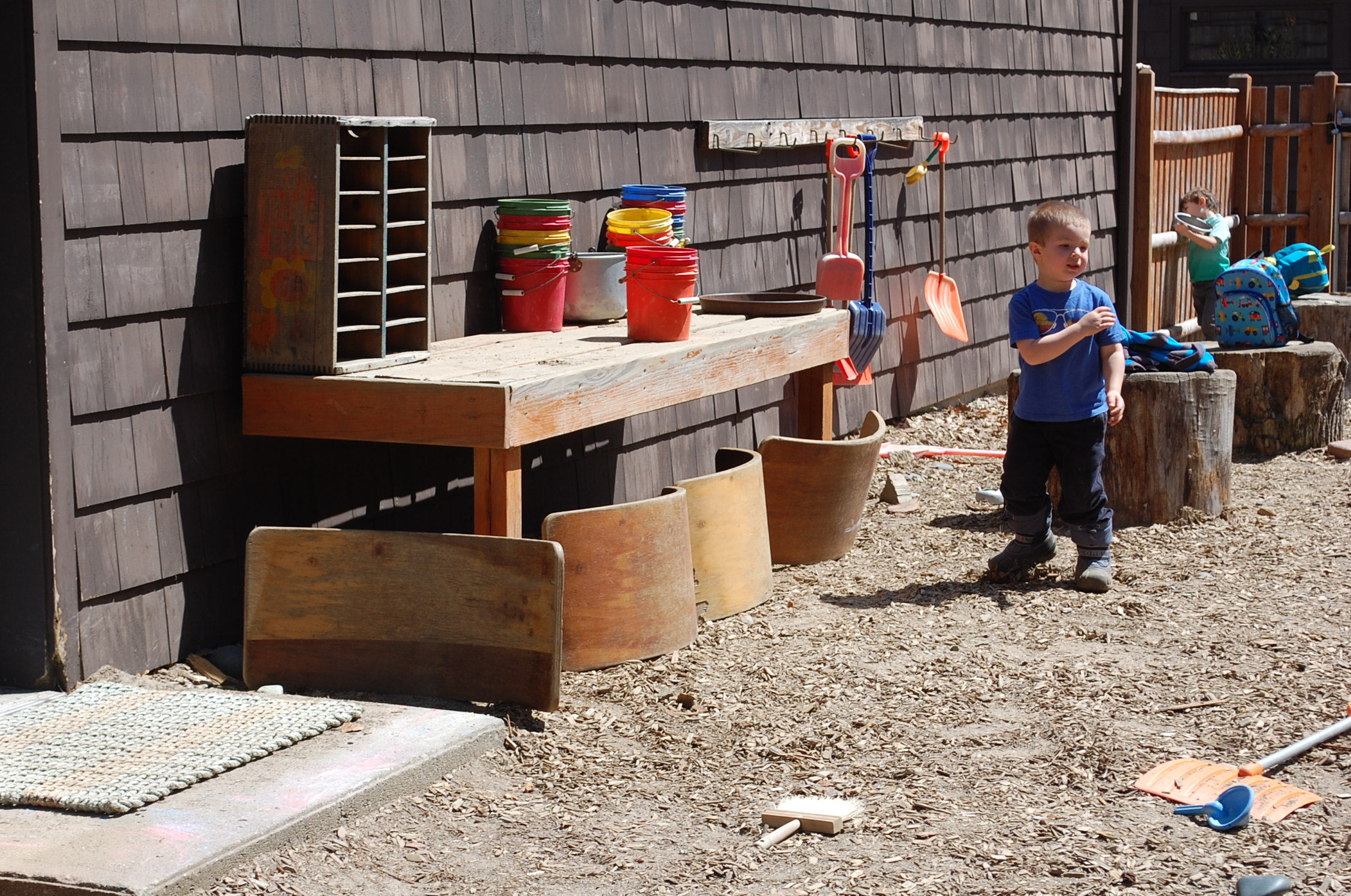


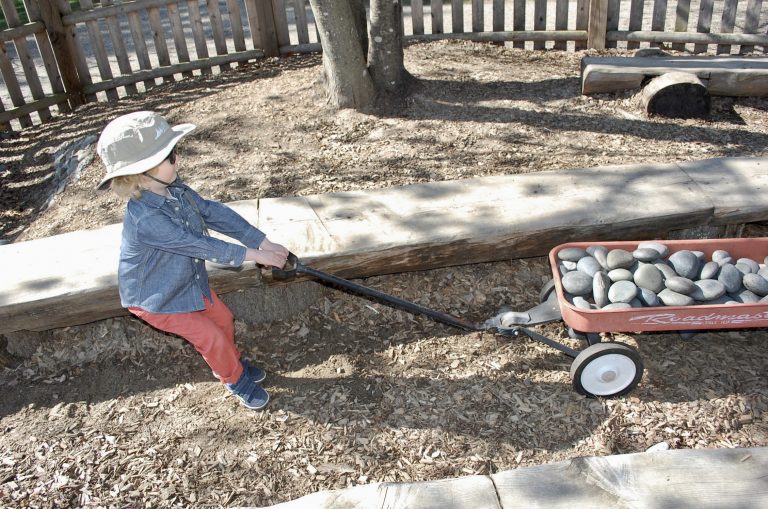
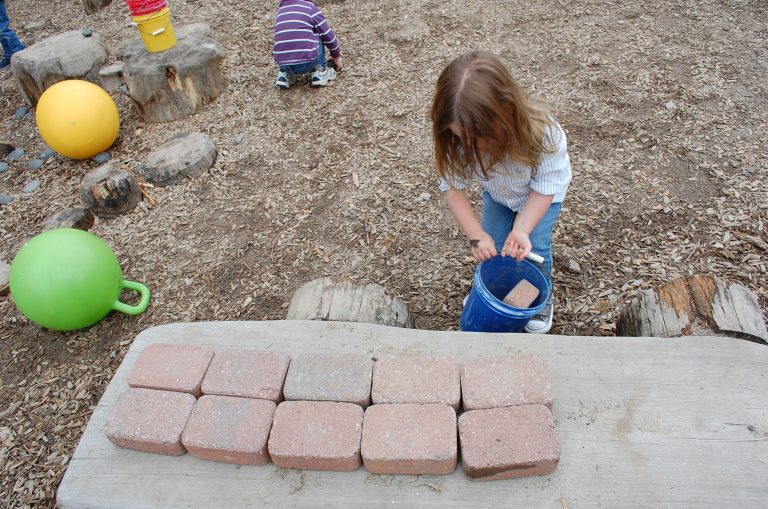
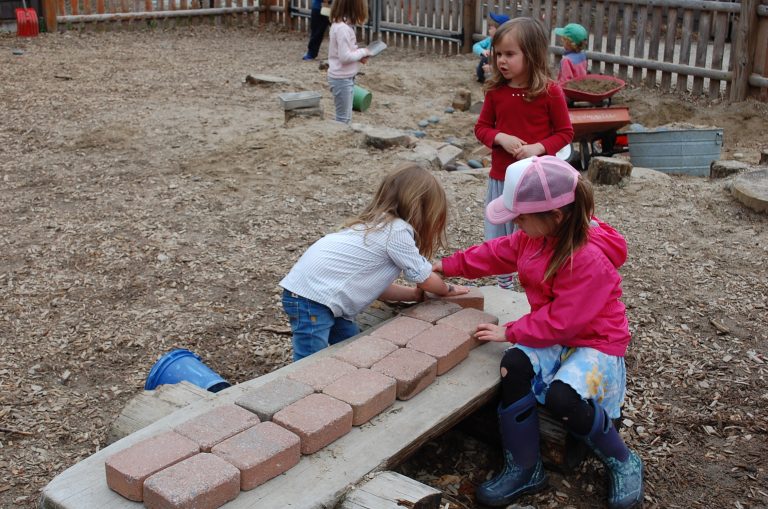
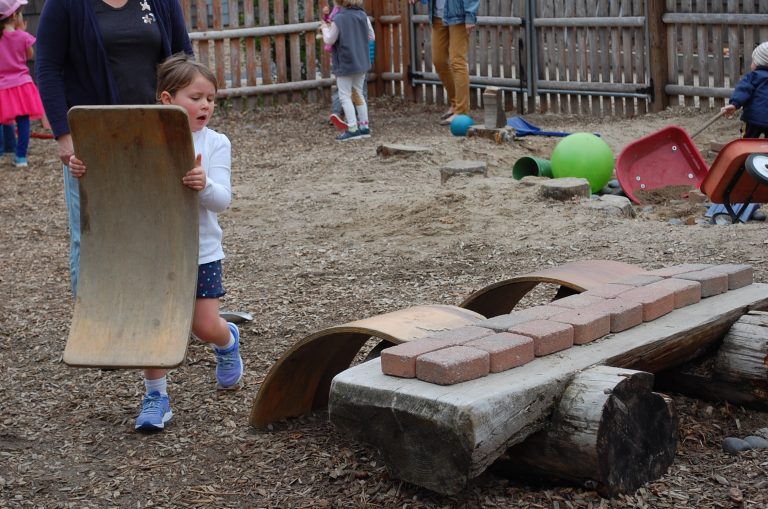
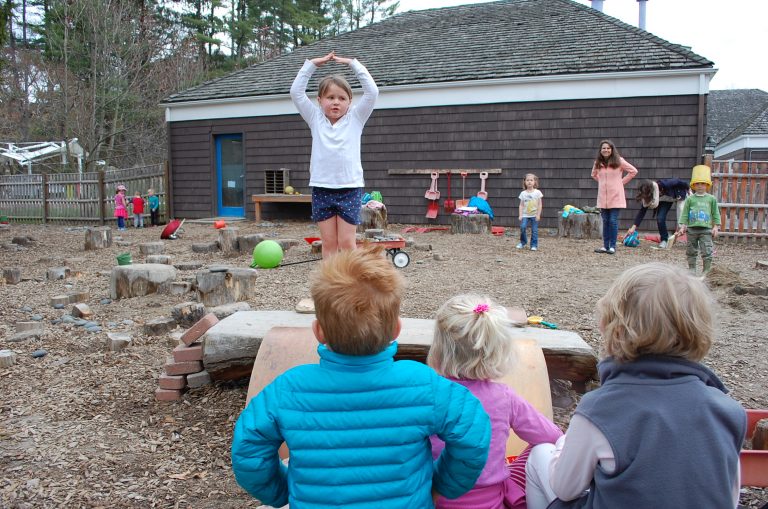
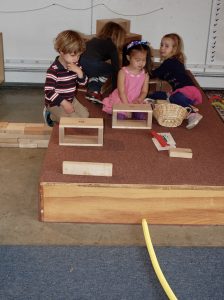 Travers begins making a garbage truck which morphs into an airplane. Other children join in; Amelia is excited that her mom is on the cover of our Studio Blue airplane book, and looking in the book, we notice photos of Travers building airplane wings. So we create these, and Travers adds a pop tube nose to the front. Saige brings over baskets of felt for place settings and food, Cal helps with a wing (then enjoys some of Saige’s food).
Travers begins making a garbage truck which morphs into an airplane. Other children join in; Amelia is excited that her mom is on the cover of our Studio Blue airplane book, and looking in the book, we notice photos of Travers building airplane wings. So we create these, and Travers adds a pop tube nose to the front. Saige brings over baskets of felt for place settings and food, Cal helps with a wing (then enjoys some of Saige’s food).